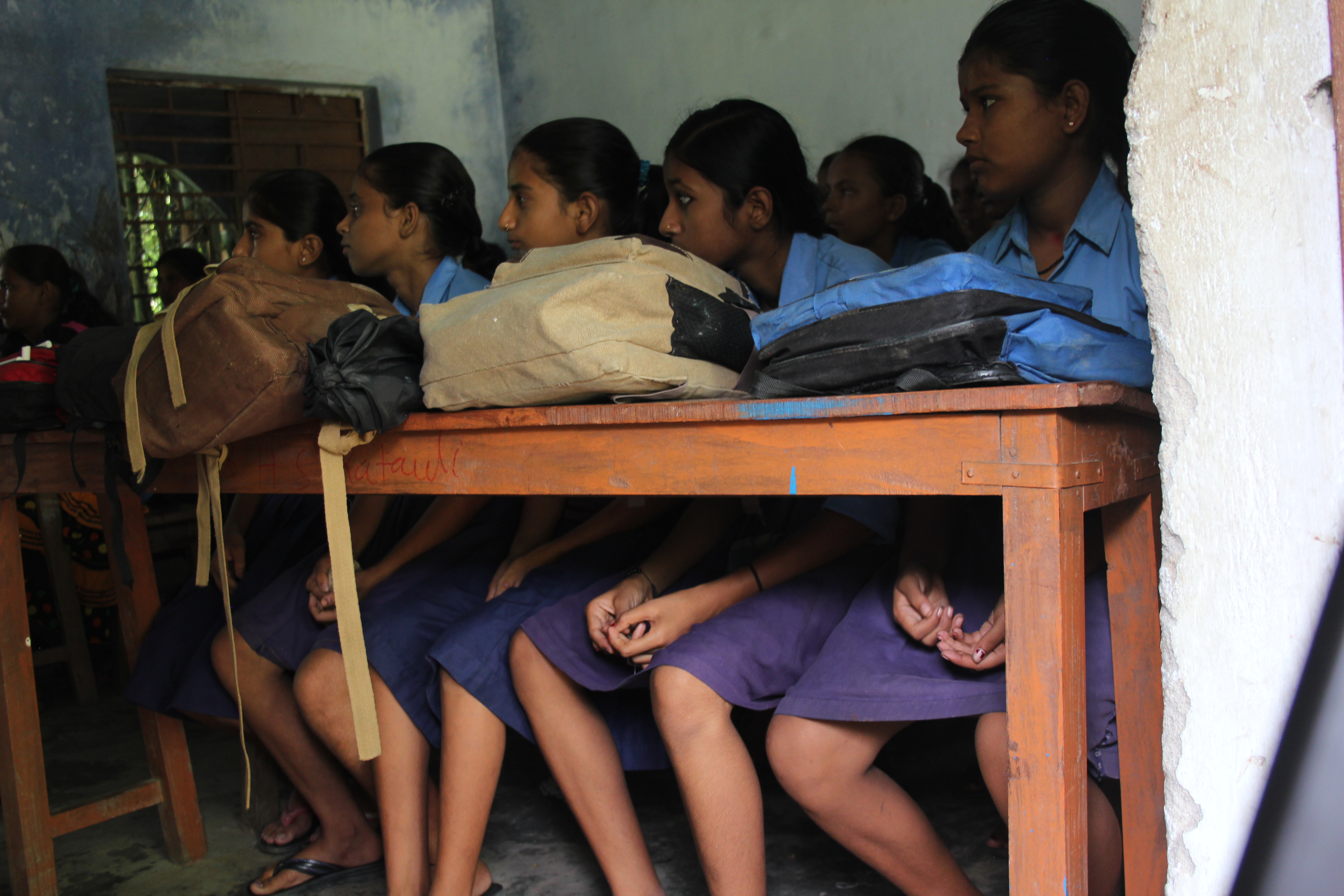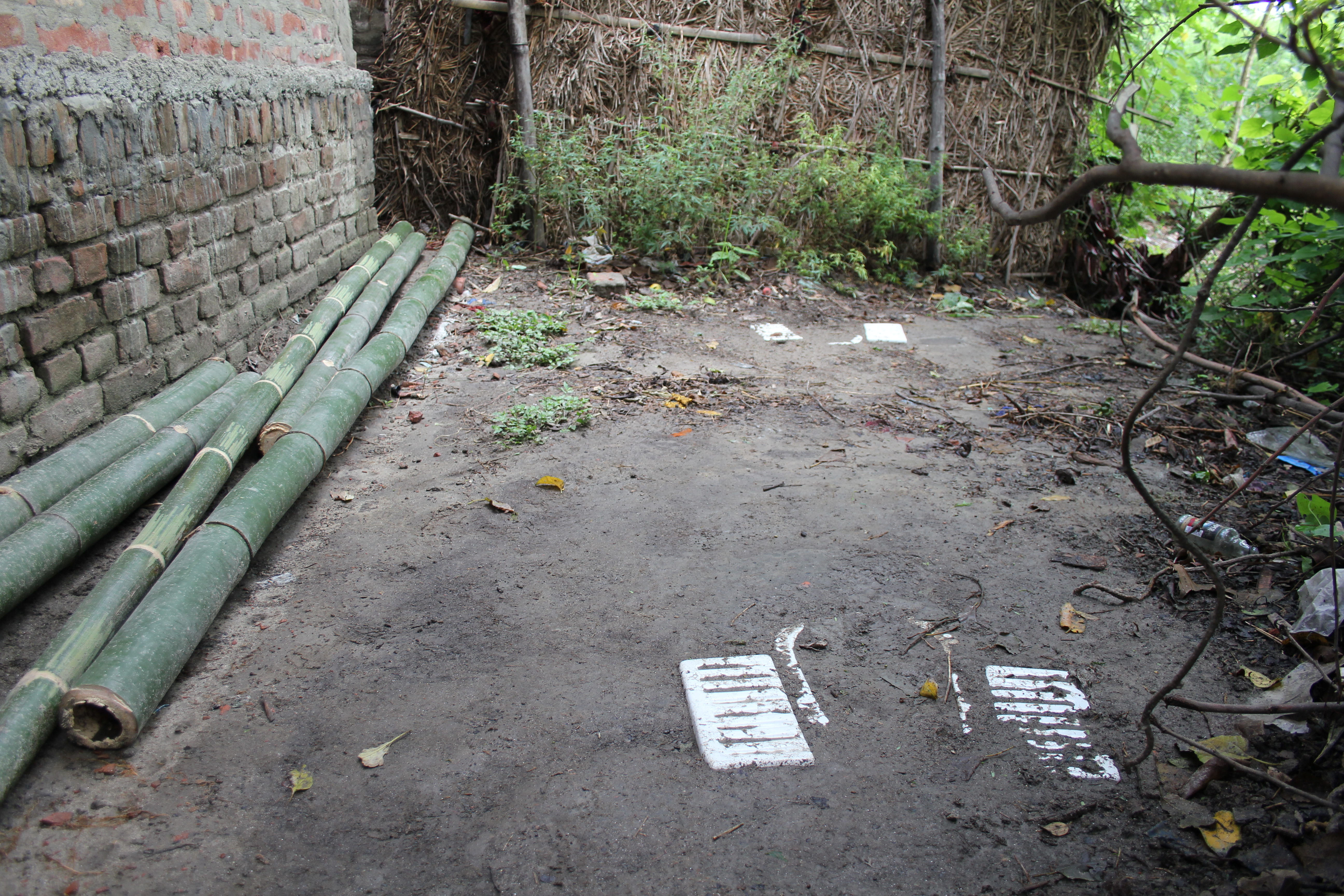
Her symptoms included belly pain and dizziness. At times, they were so severe that 10-year-old Golu Kumari went home early from school. She was not the only one with this particular set of problems.
The cause of her illness was not food poisoning or a virus. It stemmed from the lack of a toilet at her school.
"When we had to relieve ourselves, we wouldn't go because we were afraid the boys would follow us," the slight girl says. "They would stand there and watch us. Our stomachs would start hurting because we wouldn't go. Then we wouldn't feel well so we would take the rest of the day off from school."
Kumari's experience with open defecation is shared by girls across the world. Kumari's family has a toilet at home, unlike most in Supaul, her rural district of Bihar, India. She always tried to hold it at school, but if she couldn't, she would walk past the well where students pumped out drinking water for themselves and their teachers. She'd continue to the corner of the school compound—next to the headmaster's office—and enter a small corn field. Boys would follow so she and the other girls would be unable to relieve themselves.
Her classmate Sonam Kumari (no relation to Golu Kumari) does not have a toilet at home. The 14-year-old explains, "There is no toilet in our house because my mother and father are poor. There are four of us siblings and my parents are paying for school for all of us. Because of that, they aren't able to save enough money to build a toilet."
Sonam says, "When we walk outside to relieve ourselves, there is such an awful stench that our minds are overwhelmed." The two girls live near one another, so Golu lets Sonam come over and use her family's toilet.
Archana Pathak taught English at Karanpur School, where the Kumari girls study. Pathak looks glamorous, donning a dazzling, bold violet sari, but seems embarrassed when talking about her school's sanitation.
"As teachers, we don't drink water during the day because we don't want to need the toilet," she says with an apologetic smile. She remembers her female students sometimes having difficulty paying attention during class because they were dehydrated. Fewer older girls attended school, which Pathak attributes to the fact that they had no place in school to change their sanitary napkins.
A few years ago, the school built a toilet for girls. She shows off the school's latrines: two for boys, one for girls. They are simple but clean, porcelain pans standing out from the gray concrete floor of the room, with functioning doors ensuring the privacy of their users. The boys' toilets had existed before the girls' toilet was built. Even now, of the 519 students at the school, 242 are girls, yet they have half the toilets as the boys. Pathak shrugs and states simply: "This is a male dominated society."
In the nearby, predominantly Muslim community of Nimua, a beautiful woman who prefers to go only by her first name, Jhakra, sits on the porch of a community toilet facility. Jhakra's golden sari contrasts with the sky blue brick wall behind her. She works as an attendant at the newly constructed toilet facility across the street from her house. Whereas many people would groan at the thought of having hundreds of people defecating in the building in front of their home every day, Jhakra is thrilled.
"Our village is cleaner," she said. "People have better knowledge of hygiene and hand washing. Even people who have nice toilets at home don't use those anymore: they come here instead."
Jhakra says that during the day, many children walk from the local primary school five minutes away to use the community toilets. "The school has toilets but they've been locked for a long time. Some of the children go in the fields, but many, including all of the girls, come here."
Why are school toilets locked? Some, including Jhakra, believe toilets are locked so that teachers have exclusive access to them. Others say it is an issue of maintenance: many of India's school toilets were built through the School Sanitation and Hygiene Education Program, which funded toilet construction but relied on the schoolchildren to clean them. Some schools struggled with getting children to clean the toilets, so the responsibility fell on teachers. If toilets fell into disrepair, they were locked.
Absent or unavailable toilets in schools are just one part of the complicated problem of open defecation in India. Over 600 million Indians defecate outside every day because they lack toilets in their homes, schools, or workplaces. In Bihar, one of India's poorest states, approximately 70 percent of people do not have toilets at home. Public health consequences include premature death from diarrheal illness and stunting of growth of children. It also has an enormous economic impact: an estimated Rs. 2.4 trillion ($53.8 billion), or 6.4 percent of India's GDP was lost in 2006 due to poor sanitation.
Prime Minister Narendra Modi is determined to change this course. In his first Independence Day speech last year, Modi said, "Brothers and sisters, we are living in the 21st century. Has it ever pained us that our mothers and sisters have to defecate in the open? Whether dignity of women is not our collective responsibility? The poor womenfolk of the village wait for the night; until darkness descends, they can't go out to defecate." He called on the government to focus its attention on sanitation and for the private sector to spend corporate social responsibility money on building toilets in schools. "All schools in the country should have toilets with separate toilets for girls. Only then our daughters will not be compelled to leave school midway."
Modi's government has a lot of ground to cover. In Karanpur School's district, less than half of primary schools had toilets for boys or girls in 2013-2014. The numbers are better for older students: 75 percent of upper primary schools had toilets for girls and 83.3 percent had them for boys; in combined primary and upper primary schools, like Karanpur School, about 85 percent of schools had toilets for boys and girls.
This poor sanitation infrastructure has real health consequences in Bihar. Dr. Brijendra Deo, a pediatrician at Deo Children's Hospital in the neighboring district of Saharsa, explains. "Poor sanitation is responsible for at least 25 percent of the cases we see here." Deo says, "I see gastroenteritis, hepatitis A, typhoid...these are transmitted by the fecal-oral route."
The "fecal-oral route" is the transmission of germs from one person's feces into another person's mouth. Poop is packed with pathogens—bacteria, viruses, and sometimes parasites. These bugs are released into the environment when someone defecates. If a person uses a flush toilet with a sewer system, the feces are ideally carried away to a waste treatment plant. If the fecal matter is contained in a pit latrine, it remains there until it is removed and can be safely processed. But if a person relieves himself outside, pathogens from fecal matter can more easily transmit to another person's mouth. This can happen if they seep into the ground water that people pump and drink, if rain washes them into a stream where someone swims, and if a fly lands on the feces and then on food. These disease-causing agents can also be transmitted if someone doesn't wash his hands after going to the bathroom, and then touches food or someone else's hands.
When Deo was six years old, he suffered from dysentery, another disease transmitted via the fecal-oral route. At that time, his family's home did not have a toilet. "I was bedridden for almost one month, I lost my schooling for many months, I was in a coma for two or three days."
After Deo recovered, his family built a toilet in their home. The illness, however, did not motivate the construction. "No. I'm sorry to say that." The decision was simpler: "We were more comfortable financially."
Even if households and schools build toilets, poor sanitation is a shared experience. Deo explains, "You can't separate the sanitation of a family from a community. If one family defecates in the open, does not have proper disposal of waste, it involves the entire community. Houseflies and other insects will come and infect all other families; the source of water will be contaminated."
And while it is very difficult to discern this threshold—what perecentage of the population must use toilets before the communal water source is safe—it is easier to understand the impact that sanitation can have on education.
Anjali Adukia, assistant professor at the University of Chicago Harris School of Public Policy, did just this. Her study showed that school latrines improved educational outcomes in India: schools with latrines attracted more female teachers, enrolled more children, and boasted higher pass rates for middle-school board exams. These findings held up for children across a wide range of social classes and income levels.
Adukia believes that school sanitation holds the potential to change open defecation practices in India. By working with children, "You're significantly increasing your surface area of impact. Children have a lot of influence in communities: they go home, they can nag their parents; they teach their brothers and sisters; they talk to their friends. They're pretty powerful social change agents. So I think if we are not focusing on school sanitation, or on children in some way, we're really missing a huge opportunity."







